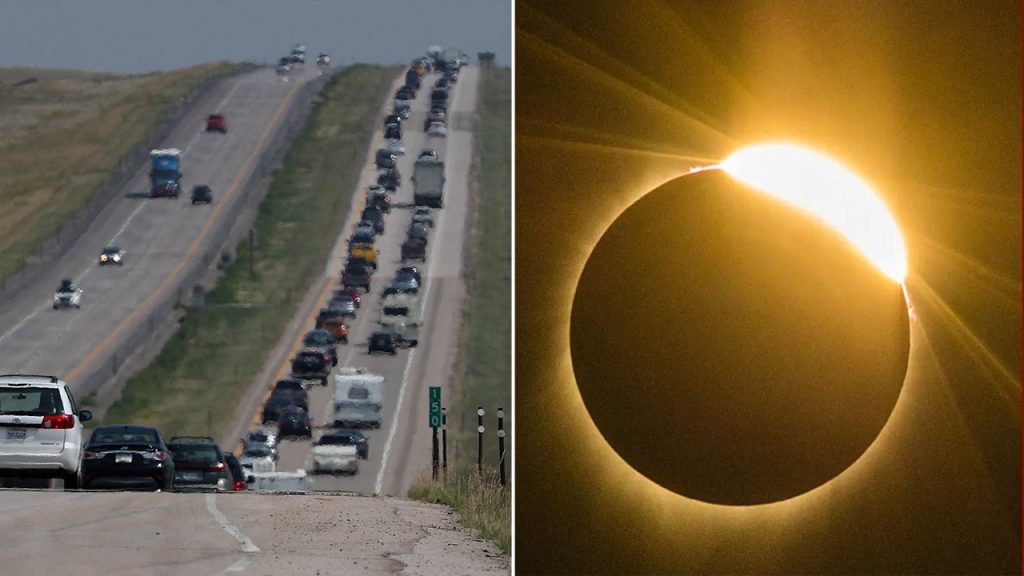The upcoming total solar eclipse on Monday is expected to draw large crowds and increased traffic, raising concerns about potential risks for motorists. Researchers have noted a 31% increase in fatal traffic accidents during the 2017 total eclipse, including the days before and after the event. Surprisingly, fatal collisions decreased during the actual eclipse hour when the moon obscured the sun, but the surrounding hours saw a rise in accidents, especially after viewers started their drive home. Law enforcement is bracing for the upcoming event based on previous trends.
During the 2017 eclipse, around 20 million people in the U.S. traveled to cities within the 70-mile path of totality. The upcoming 2024 solar eclipse is expected to be within three hours of eight major cities, leading to estimates of 5 million people traveling for the event. The Institute of Transportation Engineers conservatively estimated that if everyone left the path of totality at the same time, the resulting traffic would be equivalent to 71 sold-out football games concluding simultaneously. Road safety concerns are mounting as the event approaches.
NASA estimates that 31.6 million people currently live within the path of totality for the 2024 eclipse, with an additional 150 million being able to see partial totality. The 2017 eclipse had a narrower path of totality compared to the upcoming eclipse, which is estimated to have a 115-mile-wide band. Researchers studying the impact of the 2017 eclipse found that road traffic fatality rates increased during the three-day window surrounding the eclipse, leading to an extra crash-involved person every 25 minutes and an extra crash fatality every 95 minutes.
Preparations for the upcoming solar eclipse have been underway for months, with law enforcement and municipal officials focusing primarily on traffic safety. In past eclipse events, such as one in Oregon in 2017, traffic jams lasted for more than 20 hours. In western New York, experts anticipate up to 1 million eclipse chasers, a significant number considering the region’s population of just over 2 million. Law enforcement is gearing up for the event, with up to 150 additional state troopers expected to assist with traffic control.
Potential dangers of the eclipse event include impacted cellphone service, traffic jams, and decreased mobility for first responders in case of emergencies. Some areas, such as Niagara Falls, New York, are taking steps to encourage visitors to stay after the eclipse to help manage departing traffic more effectively. Vendors, musicians, and nighttime fireworks are being offered to keep visitors entertained while also spacing out traffic. The Niagara region on the Canadian side of Niagara Falls declared a state of emergency for the day of the eclipse due to concerns about these potential risks.
Overall, the upcoming total solar eclipse on Monday is expected to draw significant crowds and pose challenges for law enforcement and motorists. The lessons learned from the 2017 eclipse, including increased fatal traffic accidents surrounding the event, have prompted authorities to prepare and plan for potential road safety risks. Efforts are being made to mitigate potential dangers such as traffic jams, impacted cellphone service, and limited mobility for emergency responders. As millions of people prepare to witness this rare celestial event, ensuring public safety on the roads remains a top priority.


